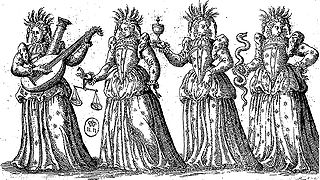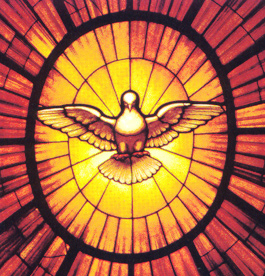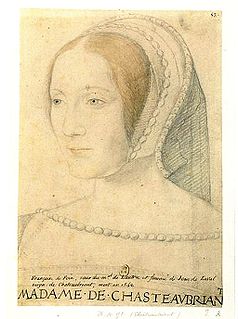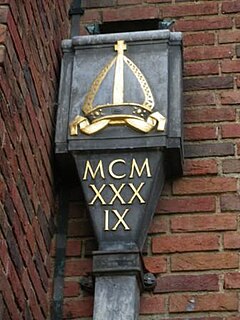
The Albert Memorial, directly north of the Royal Albert Hall in Kensington Gardens, London, was commissioned by Queen Victoria in memory of her beloved husband Prince Albert, who died in 1861. Designed by Sir George Gilbert Scott in the Gothic Revival style, it takes the form of an ornate canopy or pavilion 176 feet (54 m) tall, in the style of a Gothic ciborium over the high altar of a church, sheltering a statue of the prince facing south. It took over ten years to complete, the £120,000 cost met by public subscription.

Peter II, was Duke of Brittany, Count of Montfort and titular earl of Richmond, from 1450 to his death. He was son of Duke John VI and Joan of France, and a younger brother of Francis I.

Francis II of Brittany was Duke of Brittany from 1458 to his death. He was the grandson of John IV, Duke of Brittany. A recurring theme in Francis' life would be his quest to maintain the quasi-independence of Brittany from France. As such, his reign was characterized by conflicts with King Louis XI of France and with his daughter, Anne of France, who served as regent during the minority of her brother, King Charles VIII. The armed and unarmed conflicts between 1484–1488 have been called the Mad War and also the "War of the Public Weal".

Anne of Brittany was Duchess of Brittany from 1488 until her death, and queen consort of France from 1491 to 1498 and from 1499 to her death. She is the only woman to have been queen consort of France twice. During the Italian Wars, Anne also became queen consort of Naples, from 1501 to 1504, and duchess consort of Milan, in 1499–1500 and from 1500 to 1512.

Four cardinal virtues were recognized by Plato and in the Bible, classical antiquity and in traditional Christian theology:

Claude of France was a queen consort of France by marriage to Francis I. She was also ruling Duchess of Brittany from 1514. She was a daughter of the French king Louis XII of France and Anne of Brittany.

The seven gifts of the Holy Spirit are an enumeration of seven spiritual gifts originating from patristic authors, later elaborated by five intellectual virtues and four other groups of ethical characteristics. They are: wisdom, understanding, counsel, fortitude, knowledge, piety, and fear of the Lord.

Françoise de Foix, Comtesse de Châteaubriant was a chief mistress of Francis I of France.

Gaston IV was the sovereign Viscount of Béarn and the Count of Foix and Bigorre in France from 1436 to 1472. He also held the viscounties of Marsan, Castelbon, Nébouzan, Villemeur and Lautrec and was, by virtue of the county of Foix, co-prince of Andorra. From 1447 he was also Viscount of Narbonne. Through his marriage to Eleonor, heiress of the Kingdom of Navarre, he also held the title of Prince of Navarre.

Michel Colombe was a French sculptor whose work bridged the late Gothic and Renaissance styles.

Nantes Cathedral, or the Cathedral of St. Peter and St. Paul of Nantes, is a Roman Catholic church located in Nantes, Pays de la Loire, France. The cathedral is in the Gothic architectural tradition. Construction of the church began in 1434, on the site of a Romanesque cathedral, and took 457 years to finish, finally reaching completion in 1891. It has been listed since 1862 as a monument historique by the French Ministry of Culture.

Margaret of Foix was Duchess of Brittany from 1474 to 1486 by marriage to Francis II, Duke of Brittany.

A Pardon is a typically Breton form of pilgrimage and one of the most traditional demonstrations of popular Catholicism in Brittany. Of very ancient origin, probably dating back to the conversion of the country by the Celtic monks, it is comparable to the parades associated with Saint Patrick's Day in Ireland or New York City.

Margaret of Brittany was a duchess consort of Brittany. She was the elder of the two daughters of Francis I, Duke of Brittany, by his second wife, Isabella of Scotland.

The Cardinal and Theological Virtues is a lunette fresco by Raphael found on the south wall of the Stanza della Segnatura in the Apostolic Palace of the Vatican. Three of the cardinal virtues are personified as statuesque women seated in a bucolic landscape and the theological virtues are depicted by putti. The fresco was a part of Raphael's commission to decorate the private apartments of Pope Julius II. These rooms are now known as the Stanze di Raffaello. After completing his three monumental frescoes Disputation of the Holy Sacrament, The Parnassus, and The School of Athens in the Stanza della Segnatura, Raphael painted the Cardinal and Theological Virtues in 1511.

Anne of Brittany was the object of representations very early on. The royal propaganda of Charles VIII and, later on, of Louis XII idealized her as a symbol of the perfect queen, on the union between the kingdom and the duchy, and of the return to peace. Maximilian's Austria having been evicted from the marriage, had a different perspective on the events. Throughout the centuries, historians and popular imagery forged a very different Anne of Brittany, attributing her physical or psychological characteristics or actions that are not necessarily verifiable through historical data.

The exterior sculpture of Guildford Cathedral provides many artistic features, including sculptures, engravings and more by some of England’s finest sculptors and craftsmen of the 1950s and 1960s. The people who worked on the cathedral include: Edward Maufe, Alan Collins, Vernon Hill, Eric Gill, John Hutton, Dennis Huntley and others.

The Mellini or Saint Nicholas of Tolentino Chapel is the third chapel on the left-hand side of the nave in the Church of Santa Maria del Popolo in Rome. The chapel contains several funeral monuments of the members of the Mellini family among them the works of Alessandro Algardi and Pierre-Étienne Monnot.

Trémaouézan Parish close is located at Trémaouézan in the arrondissement of Brest in Brittany in north-western France. The enclosure includes the Notre-Dame church, ossuary and calvary. The church was built in the 15th Century and much enlarged in 1597 when the chapel was added. The Renaissance porch, located on the south side of the church, was added in 1610 with statues of the apostles. The calvary separates the church from the ossuary. Inside the church is a notable baptismal font and a number of wood carvings dating to the 17th century. The bell tower is of the "léonard" style. It was hit by lightning in 1702 but restored in 1714. There is a note in the church archives dated 1713, recording that many women sold their rings to help fund the reconstruction. It is a listed historical monument.

The Tomb of Louis XII and Anne of Brittany is a large and complex silver-gilt and marble sculptured funerary monument. Its design and build are usually attributed to the Juste brothers although the work of several other hands can be distinguished. Design for and installed at the Saint-Denis Basilica, France, it was commissioned in 1515 in memory of Louis XII and his queen Anne of Brittany, probably by Louis' successor Francis I, and after years of design and intensive building was unveiled in 1531.




































